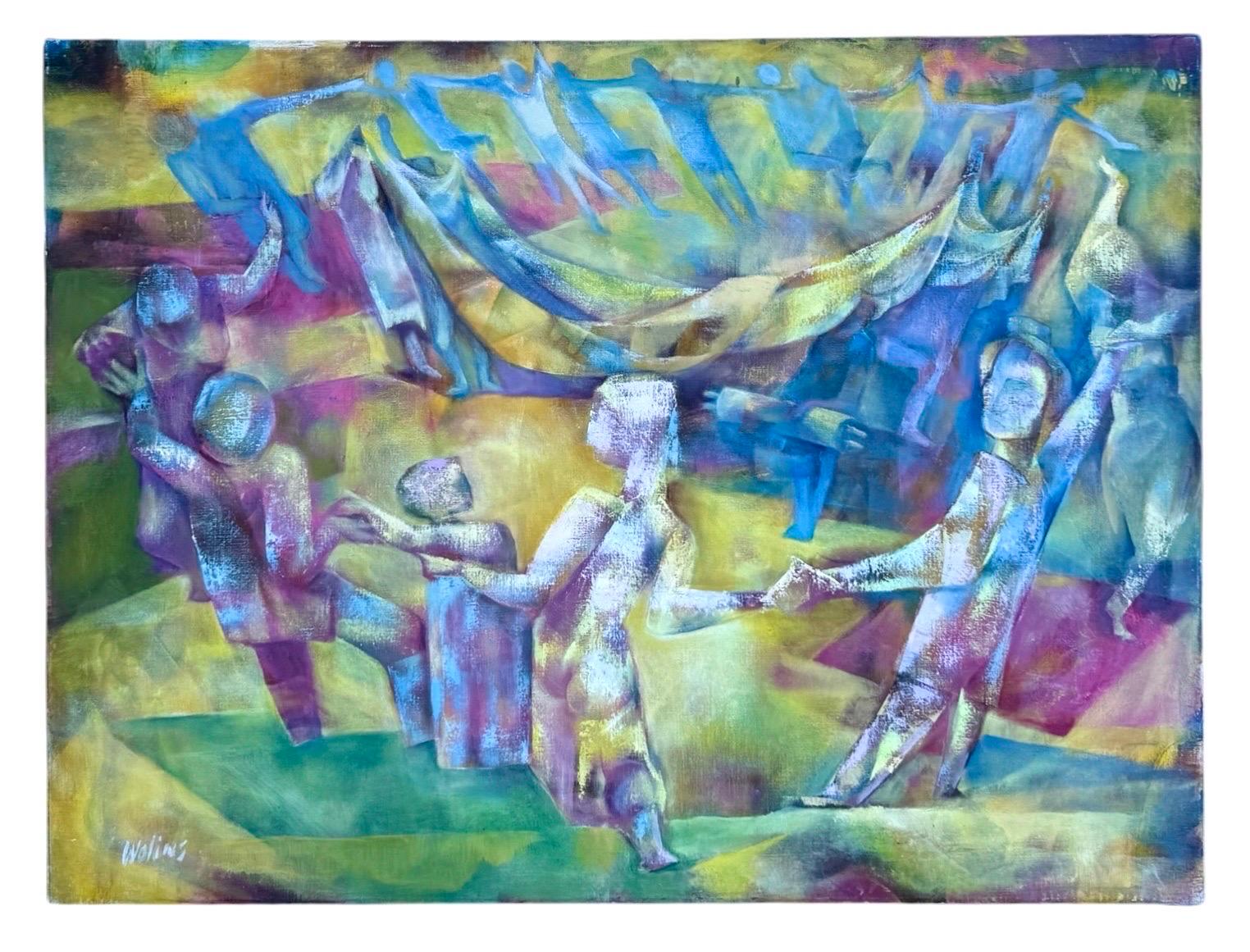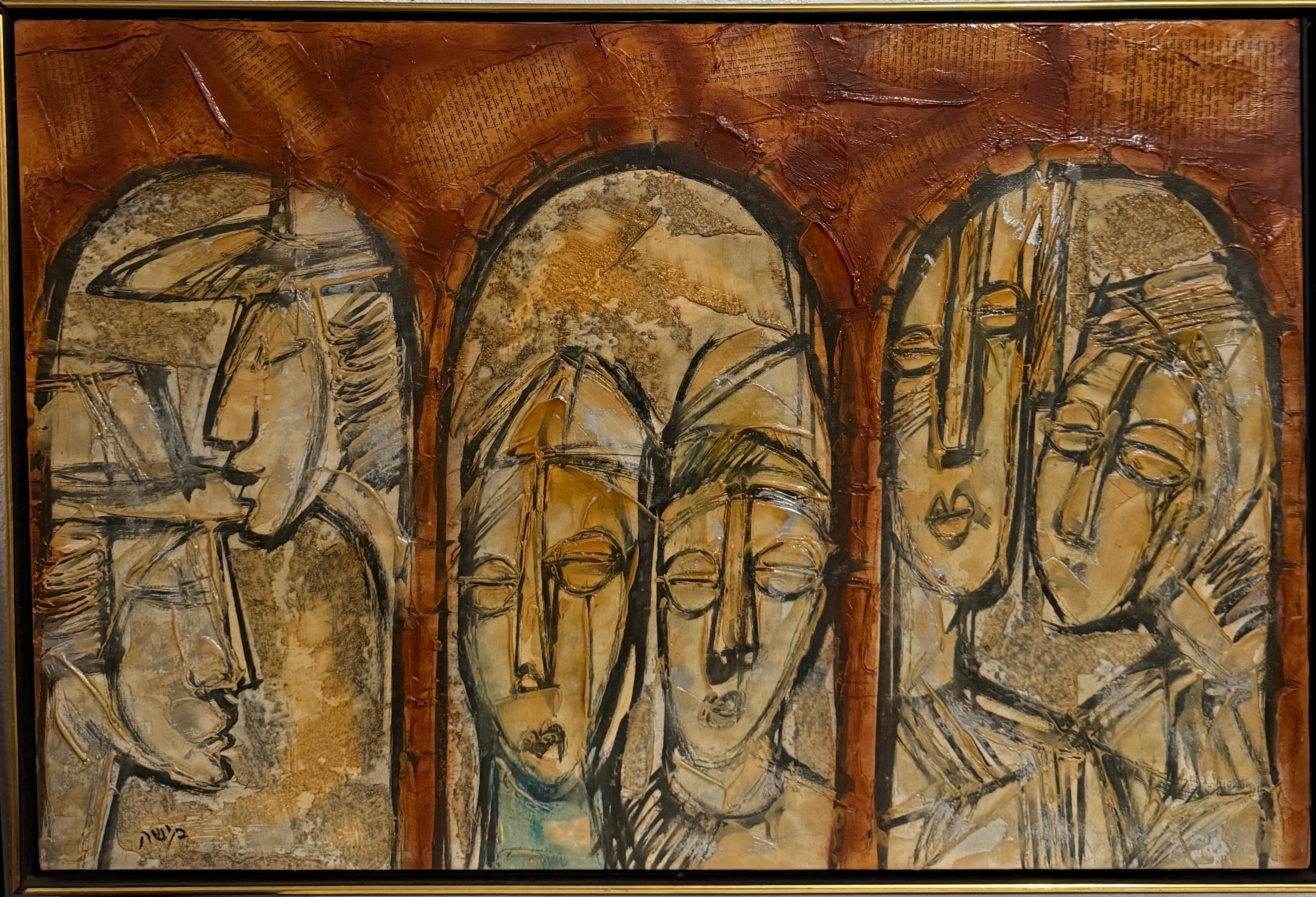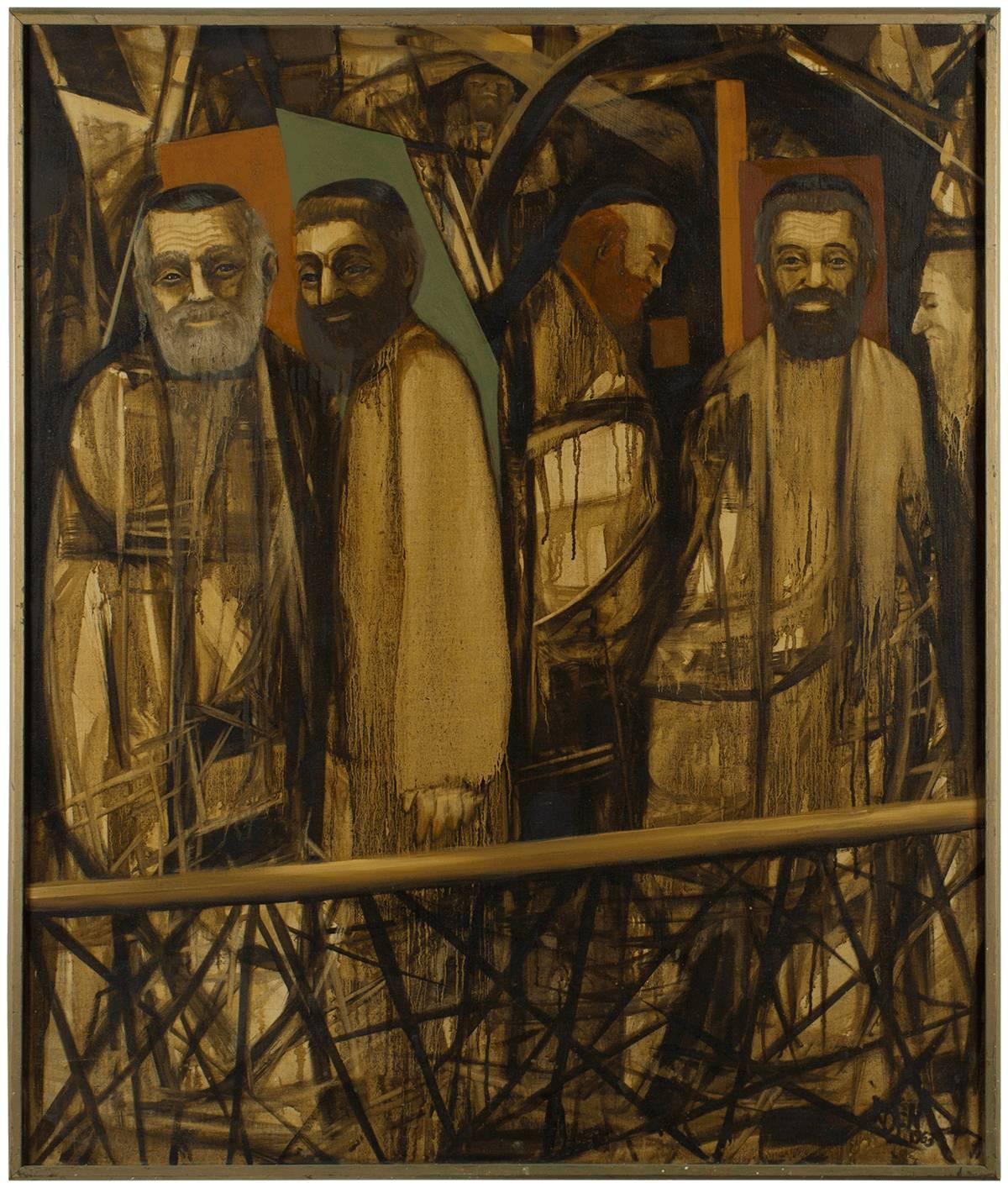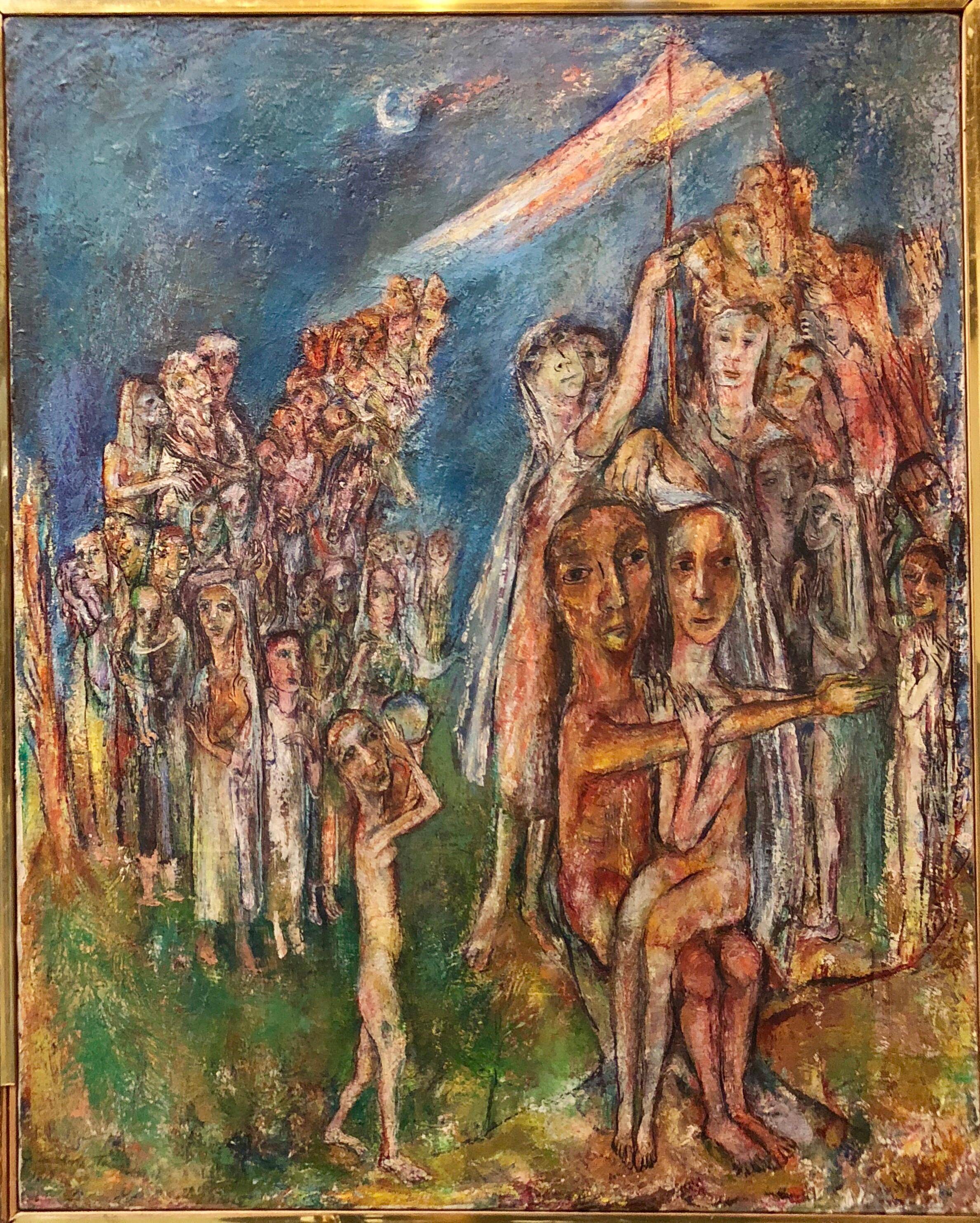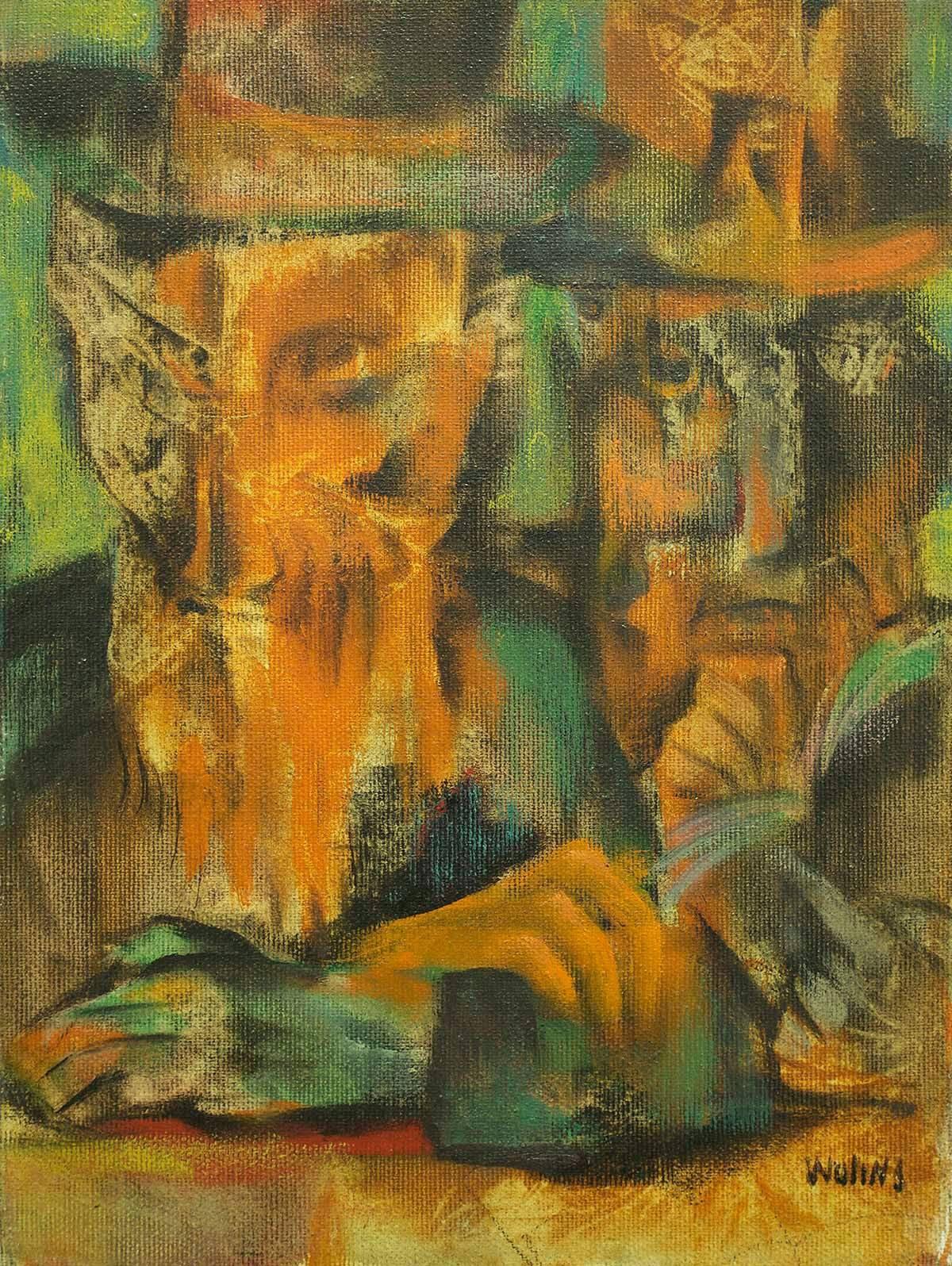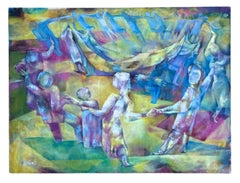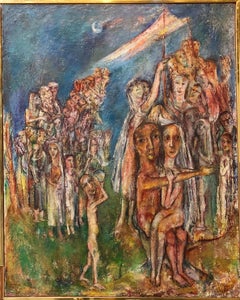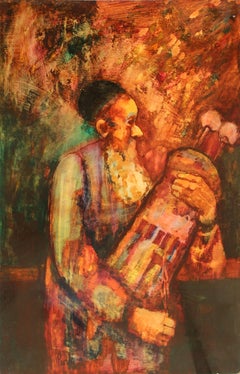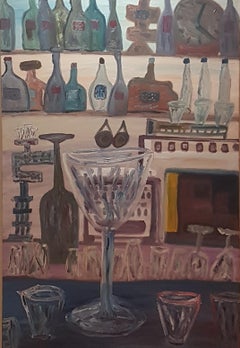Joseph WolinsTOAST TO THE BAR MITZVA Modernist Judaica Oil Painting1967
1967
About the Item
- Creator:Joseph Wolins (1915-1999, American)
- Creation Year:1967
- Dimensions:Height: 28 in (71.12 cm)Width: 22 in (55.88 cm)
- Medium:
- Movement & Style:
- Period:
- Condition:Needs new frame. minor wear to surface, mottled texture as artist intended.
- Gallery Location:Surfside, FL
- Reference Number:Seller: 2331stDibs: LU38212555022
Joseph Wolins
Joseph Wolins was born in Atlantic City, New Jersey, in 1915. He studied at the National Academy of Design from 1935–41 under Leon Kroll. While studying in Europe in 1937, he was particularly influenced by the Italian painters Piero della Francesca, Mantegna and Giotto. The Paris Exposition of 1937 afforded a unique opportunity to study Modern European Painting. Wolins was one of the New York area artists associated with the W.P.A. Art Project, 1935-1941. Further trial and experiment in painting for the next five years led to participating in group exhibitions. First one-man show was at the Contemporary Arts Gallery in New York, 1947. Wolins died on November 3, 1999, in New York.
- ShippingRetrieving quote...Shipping from: Surfside, FL
- Return Policy
More From This Seller
View All20th Century American Modern Figurative Paintings
Canvas, Oil
20th Century Modern Portrait Paintings
Canvas, Mixed Media, Acrylic
Mid-20th Century Modern Figurative Paintings
Canvas, Oil
1950s American Modern Figurative Paintings
Canvas, Oil
20th Century American Modern Figurative Paintings
Canvas, Oil
Mid-20th Century Expressionist Still-life Paintings
Oil, Wood Panel
You May Also Like
1980s Abstract Abstract Paintings
Masonite, Oil
Late 20th Century Post-War Figurative Paintings
Masonite, Oil
2010s Contemporary Figurative Paintings
Oil, Canvas
2010s Contemporary Figurative Paintings
Oil, Canvas
2010s Contemporary Figurative Paintings
Oil, Canvas
21st Century and Contemporary Contemporary Figurative Paintings
Canvas, Oil
